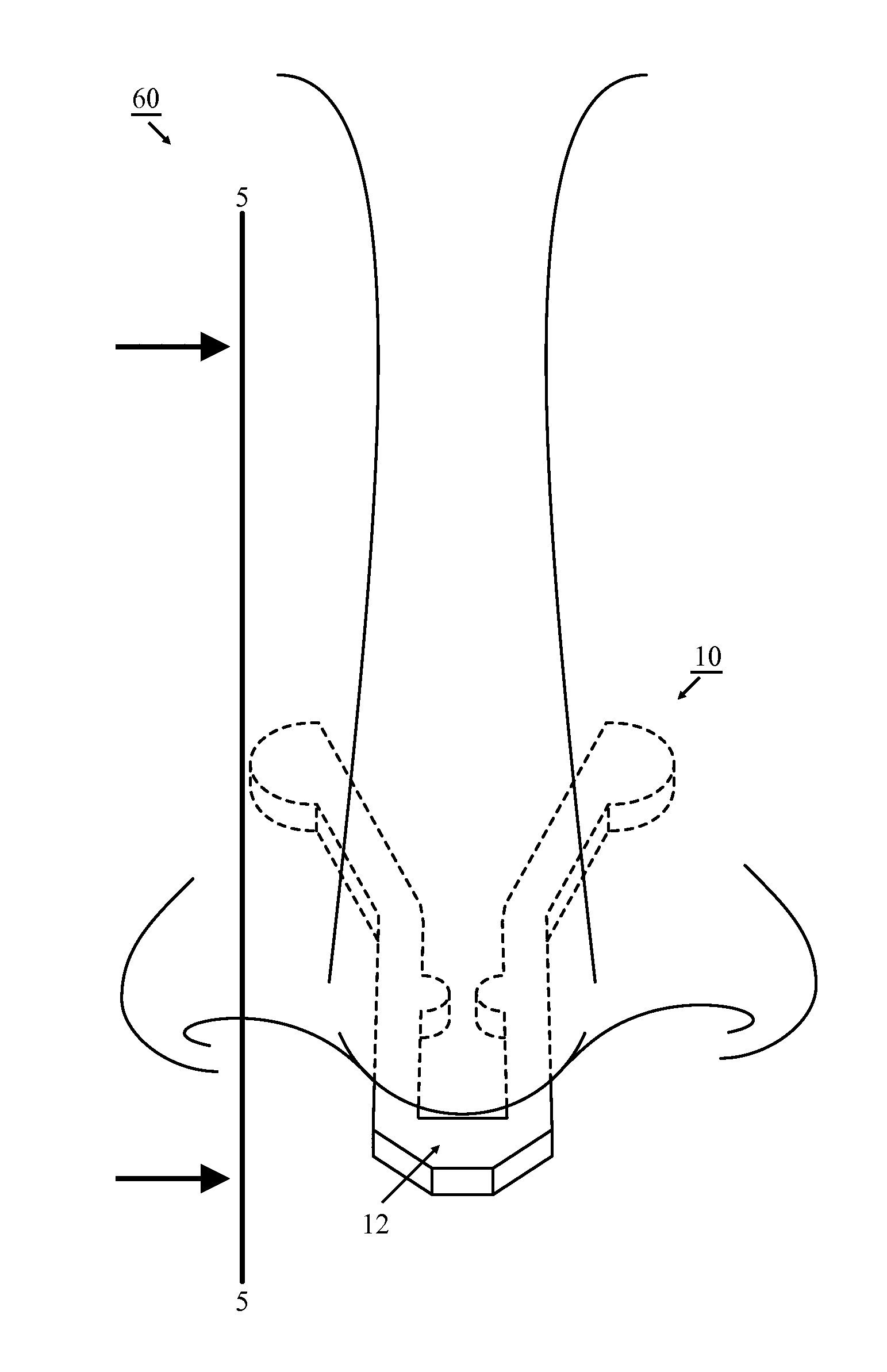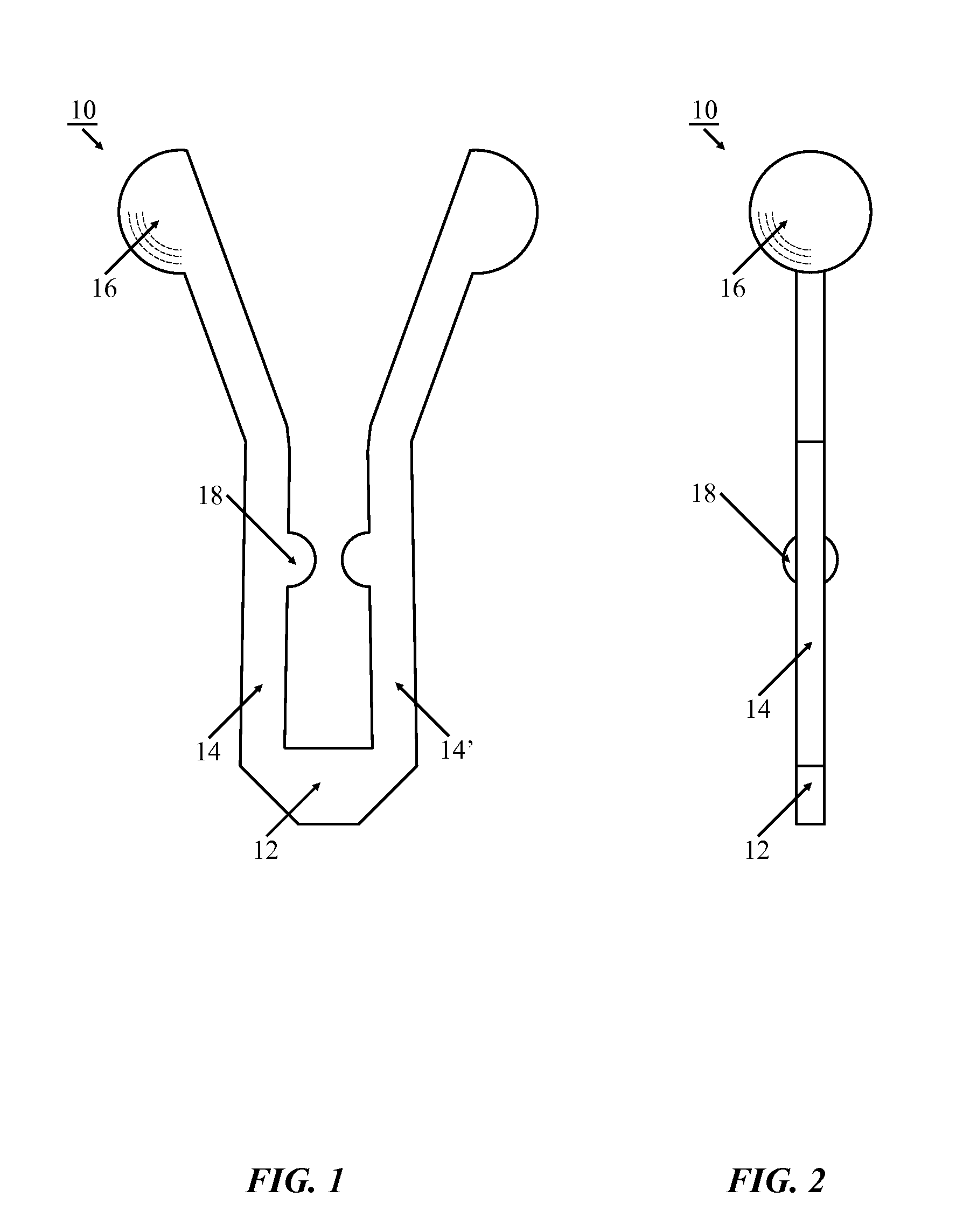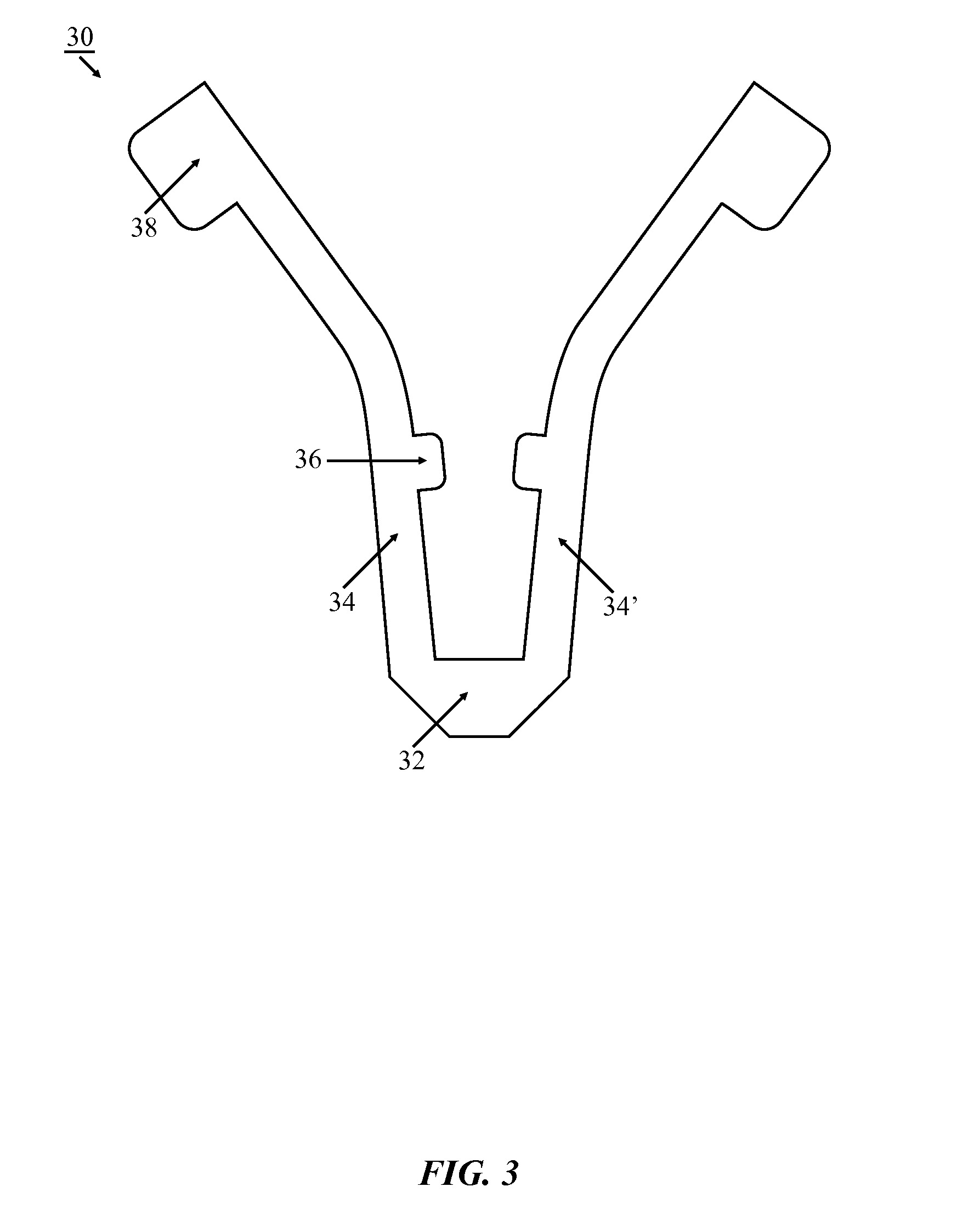Nasal breathing aid
a breathing aid and nasal tube technology, applied in the field of nasal tube breathing aids, can solve the problems of device failure to achieve the success envisioned, and the efficacy of suppressing snoring and enhancing breathing has been questioned
- Summary
- Abstract
- Description
- Claims
- Application Information
AI Technical Summary
Benefits of technology
Problems solved by technology
Method used
Image
Examples
Embodiment Construction
[0015]Turning first to FIGS. 1 and 2, there is shown a breathing aid 10 according to a preferred embodiment of the present invention. The breathing aid 10 includes a base portion 12 and arms 14, 14′ extending outward therefrom. As shown, the arms 14, 14′ flare outwardly and terminate in an outward facing rounded protuberance 16 In the preferred embodiment, the protuberances 16 can be hemispherical.
[0016]On the inner surface of the arms 14, 14′ is a second pair of inward facing protuberances 18 adjacent the base portion 12. As with the outward facing protuberances 18, in the preferred embodiment, the inward facing protuberances are also hemispherical.
[0017]The arms 14, 14′ are biased inwardly in the region of the inward facing protuberances 18 so that they are configured to grip the cartilage adjacent the vomer or, preferably, the vomer, itself. The first pair of outward facing protuberances 16 are outwardly biased to apply a slight pressure to the inner walls of the nostril, urging ...
PUM
 Login to View More
Login to View More Abstract
Description
Claims
Application Information
 Login to View More
Login to View More - R&D
- Intellectual Property
- Life Sciences
- Materials
- Tech Scout
- Unparalleled Data Quality
- Higher Quality Content
- 60% Fewer Hallucinations
Browse by: Latest US Patents, China's latest patents, Technical Efficacy Thesaurus, Application Domain, Technology Topic, Popular Technical Reports.
© 2025 PatSnap. All rights reserved.Legal|Privacy policy|Modern Slavery Act Transparency Statement|Sitemap|About US| Contact US: help@patsnap.com



